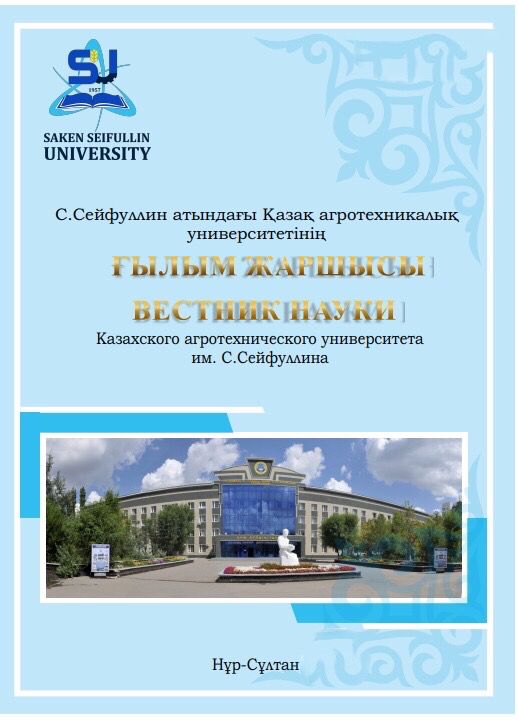PECULIARITIES OF GROWTH AND DEVELOPMENT OF THE BARNYARD MILLETDEPENDING ON THE CONDITIONS OF GROWING IN THE CONDITIONS OF THE STEPPE AREA OF AKMOLA REGION
Keywords:
Barnyard millet, Еchinochloa frumentacea, product, green mass, dry mass, seed, growth and development, irrigated, non-irrigatedAbstract
Researchworks carried out in the steppe zone of Akmola region to study th effect of bioclimatic conditions and the level of humidity supply on the growth and development and product formation of barnyard millet resulted in: Temperature conditions formed during the research years were acceptable for the growth and development and product formation of barnyard millet. Late spring and early autumn frost did not have a negative impact on the growth and development of the barnyard millet. On average in 2 years the sum of active temperatures before the earing period amounted to 1471,40C, the sum of temperatures before complete
maturity amounted to 2100,10C. The optimum temperature for growth and development fluctuated between 18,1 and 20,10C.The moisture supply during the research period had a negative impact on the growth and development of the barnyard millet, and was a major constraint factor in product formation. The water use ratio in the formation of seed production without irrigation amounted to 579,5 m 3 / c, in the conditions of irrigation, this figure was quite lowdue to the abundance of soil moisture – 317,6 m 3 / t.The troubled period of moisture was marked by stages of "tillering and stem elongation". In two years, the nominal germination rate increased by 21,1% in the irrigated area compared to non-irrigated area, and the storage of plants by 6,9%.At the same time, the height of the pre-harvest plants was 25,9% higher in irrigated areas than non-irrigatedareas.Daily growth of plants varied from 0,6 to 2,2 cm in irrigated areas and from 1,3 to 3,3 cm in non-irrigated areas.An additional 22,2 t / ha of green mass, 2,7 t / ha of dry mass and 2,6 t / ha of seeds were obtained from irrigated areas than non-irrigated areas

